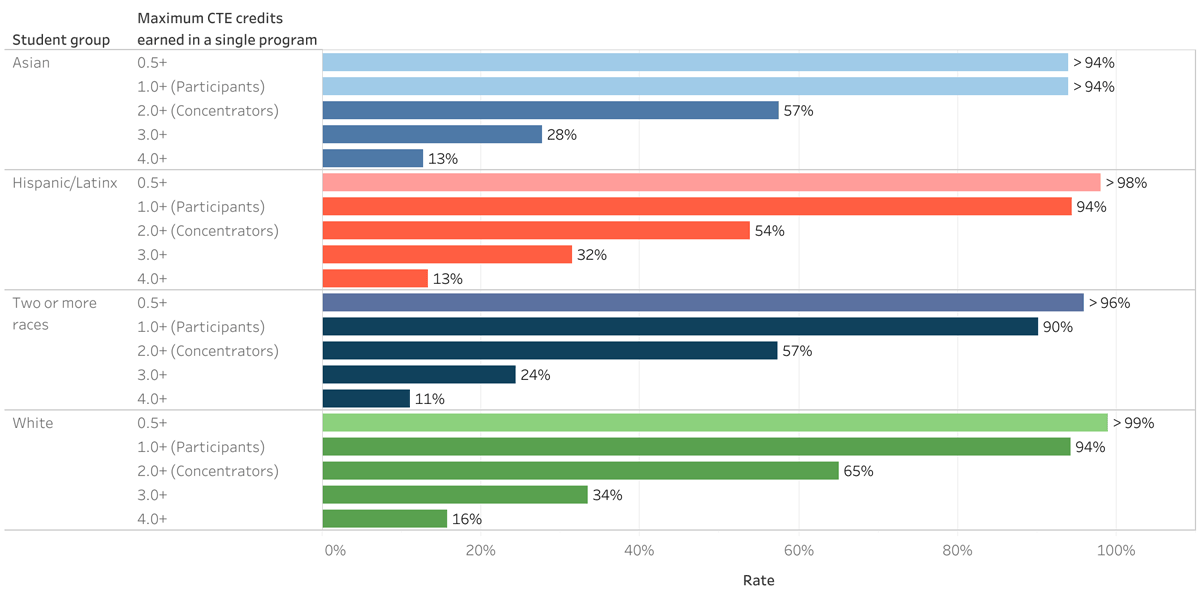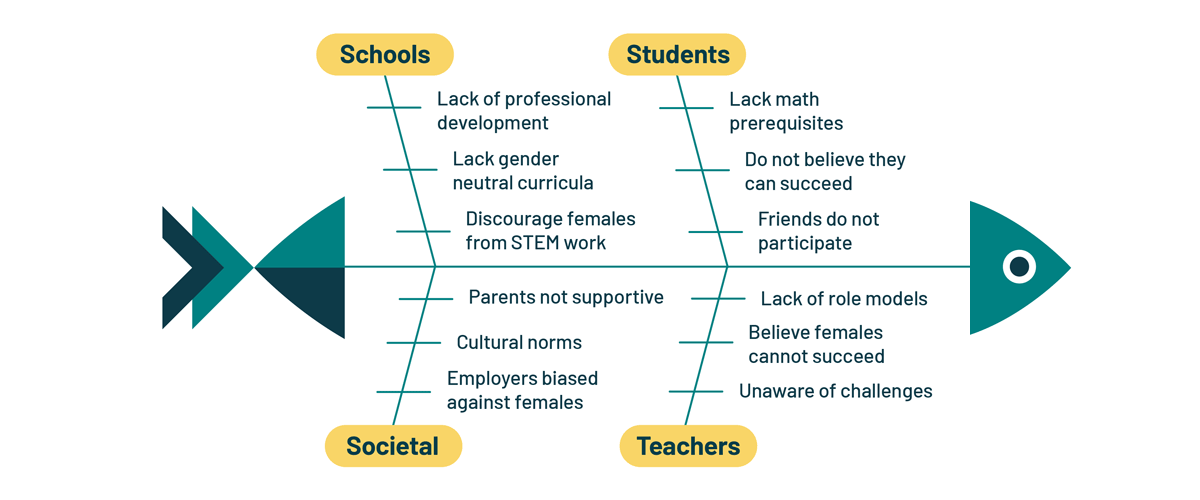Career and technical education (CTE) can prepare students for college and career success—but not all students have the same access to these important learning experiences. With the help of data and evidence, you can improve your CTE programs so every student can participate and succeed.
Under the Strengthening Career and Technical Education for the 21st Century Act (Perkins V), educators are required to conduct a biannual comprehensive local needs assessment (CLNA) to assess performance and create strategies to improve CTE programs. Our team can help you go beyond compliance to use CLNAs to transform your practices and improve equity.
With an inclusive, data-informed approach, you can promote a shared vision for CTE that engages instructors in finding solutions and empowers them to act.
Using Data and Evidence to Improve CTE
In our interactive professional development experience, you learn how to identify opportunity gaps in your CTE programs, investigate root causes behind the gaps, select tested interventions, and create plans to promote equitable programming.
Trainings are customized to use your own CTE data to uncover differences in student participation, persistence, and Perkins V outcomes by gender, race/ethnicity, family income, English learner status, special education status, and other populations important to your site.
Explore Our CTE Workshops
Once you develop your strategy, our team of technical assistance providers can help you on your journey to improve you program. Working together, we can introduce your work, build buy-in for your approach, and sustain change and improvement over time.
Gap Analysis
Understanding Participation, Persistence, and Attainment
In this workshop, site administrators classify program pathways and analyze student-level longitudinal data to assess course-taking patterns and outcomes over time.

Using your own data, produce interactive, user-friendly displays that engage educators in examining CTE data at the district, school, and program level.
What You Will Learn
- Assess student participation: View patterns of enrollment and persistence in CTE programs, overall and by selected student groups.
- Spot opportunity gaps: Determine whether gaps exist in student participation, persistence, and attainment.
- Set improvement goals: Prioritize where to take action and which sites, programs, or student groups to focus on.
Develop interactive data dashboards to help educators assess participation and attainment in CTE programs and identify opportunity gaps.
Root Cause Analysis
Underlying Factors Affecting Participation and Outcomes
In this workshop, learn how to conduct a systematic inquiry to determine which factors influence student participation, persistence, and attainment in your CTE programs. We also explore how to identify evidence-based strategies to address identified factors that prevent student success.

Consider which factors influence your students’ CTE performance and select evidence-based strategies to address them.
What You Will Learn
- Brainstorm potential factors: Identify and categorize possible causes of observed gaps.
- Target improvement efforts: Differentiate root and contributing causes to determine where action is needed.
- Choose evidence-based solutions: Select proven, culturally sensitive strategies tailored to your community.
Root cause analysis engages educators in finding the causes of student behavior so they can select relevant strategies to address them.
Operational Planning
Taking Strategic Actions to Guide Improvement Activities
Meaningful change results when educators are strategic in their approach and intentional in action. This training extends the data analyses (workshop 2) and root causes analyses (workshop 3) into actionable and sustainable strategies to achieve site improvement goals and inform development of your comprehensive local needs assessment.

Create a one-page strategic plan to implement and sustain culturally responsive practices and create benchmarks to monitor progress.
What You Will Learn
- Set an improvement goal: Determine a measurable target for your CTE program.
- Identify strategies for success: Pinpoint where and how to take action.
- Define supporting activities: List the steps you will take to effect change.
- Establish benchmarks of success: Set measurable outcomes to assess your impact.
A one-page plan is a simple, effective way to share the goals of your planned intervention and how you will monitor success.

